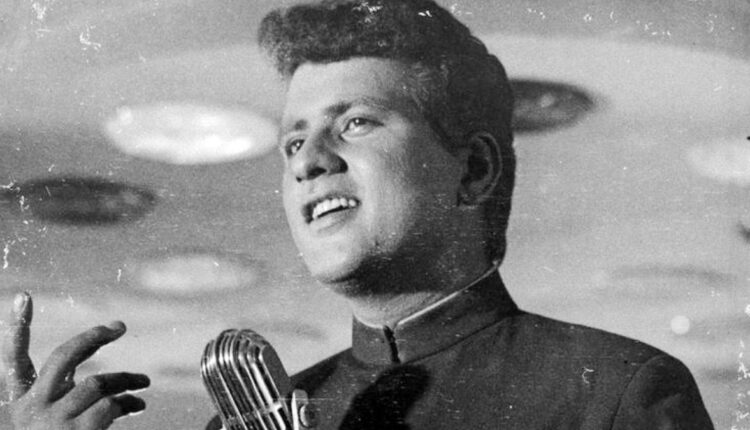The little boy in Abbottabad in the North-West Frontier Province saw Dilip Kumar in a film called Jugnu. Then and there, little Manoj Goswami decided he wanted to be a film actor. Many years later, when Manoj was a handsome young man, eking out a living with his large family in Delhi, a cousin, Lekhraj Bhakri, who was also a filmmaker, suggested that Manoj try his luck in films.
Manoj left Delhi for Mumbai in 1955. He got his first break one year later in a bit role for a film called Gangu Teli. The director, Homi Sethna, was so happy with the debutant’s work that he paid him Rs 1,000 extra. In his cousin Bhakri’s film Fashion, Manoj played a walk-on part of a beggar. He was only 19.
H. S. Rawail gave Manoj Kumar his first break as a leading man. The film was Kaanch Ki Gudiya. The reports about the new kid in tinsel town were so upbeat that Manoj signed four or five films even before his debut as a hero was released. One of these was Vijay Bhatt’s Hariyali Aur Raasta — the film that made Manoj Kumar a huge star. Then came Woh Kaun Thi and Himalay Ki God Mein. And the hits never stopped pouring in.
More than a major movie star, Manoj Kumar was always a closeted filmmaker. Even before he turned to direction officially with the pathbreaking Upkar, which he described as a “16,000 feet long celluloid flag of India,” Manoj ghost-directed his dream project Shaheed. He had seen his idol Dilip Kumar play the role of Bhagat Singh. Manoj wanted to play the freedom fighter.
There began Manoj’s career as a behind-the-scenes orchestra conductor. The actor-filmmaker claims he has partly or wholly ghost-directed many of his major hits, including Gumnaam, Neel Kamal, Patthar Ke Sanam, Pehchaan, Sanyasi, Be-imaan and Dus Numbri.
His official directorial debut Upkaar remains a stunningly fresh and invigorating work even today. Cynics who laugh at Manoj Kumar’s celluloid patriotism (comic actor I. S. Johar just couldn’t stop laughing) completely miss the point of his dedicated workmanship. Having lived through the trauma of the Partition and the ensuing horrors, Manoj Kumar chose the cinema as a means of expressing his undying love for the country. All his directorial undertakings — Upkaar, Purab Aur Paschim, Shor, Roti Kapada Aur Makaan and Kranti — are fiercely passionate celebrations of patriotic pride.
No doubt, Manoj Kumar was a far better director than an actor. As an actor, his stylized movements and slow dialogue delivery were directly inspired by Dilip Kumar. Manoj Kumar made no bones about his admiration for the Thespian. Why, Manoj even got Dilip Saab’s heroine Kamini Kaushal to play his mother in Upkar and Purab Aur Paschim!
The actor-writer-director was thoroughly disillusioned by the work ethics of the film industry. His two sons, Vishal and Kunal, tried to make a name for themselves as actors, but failed. The Manoj Kumar legacy, which stretches broadly from the mid-1950s to the end of the 80s, encompasses such historic hits as Do Badan, Woh Kaun Thi and Himalay Ki God Mein. As late as in 1975, Manoj Kumar shone as a leading man in Sanyasi and Dus Numbri — both superhits. Thereafter, the lean phase took over his career.
Manoj Kumar’s legacy as a filmmaker will never die.

